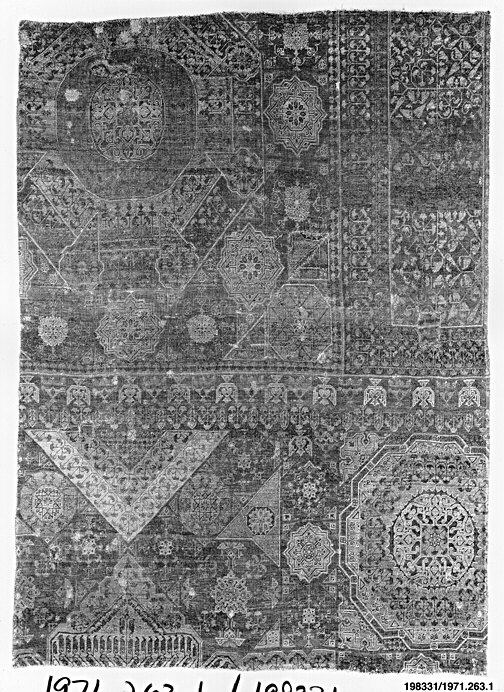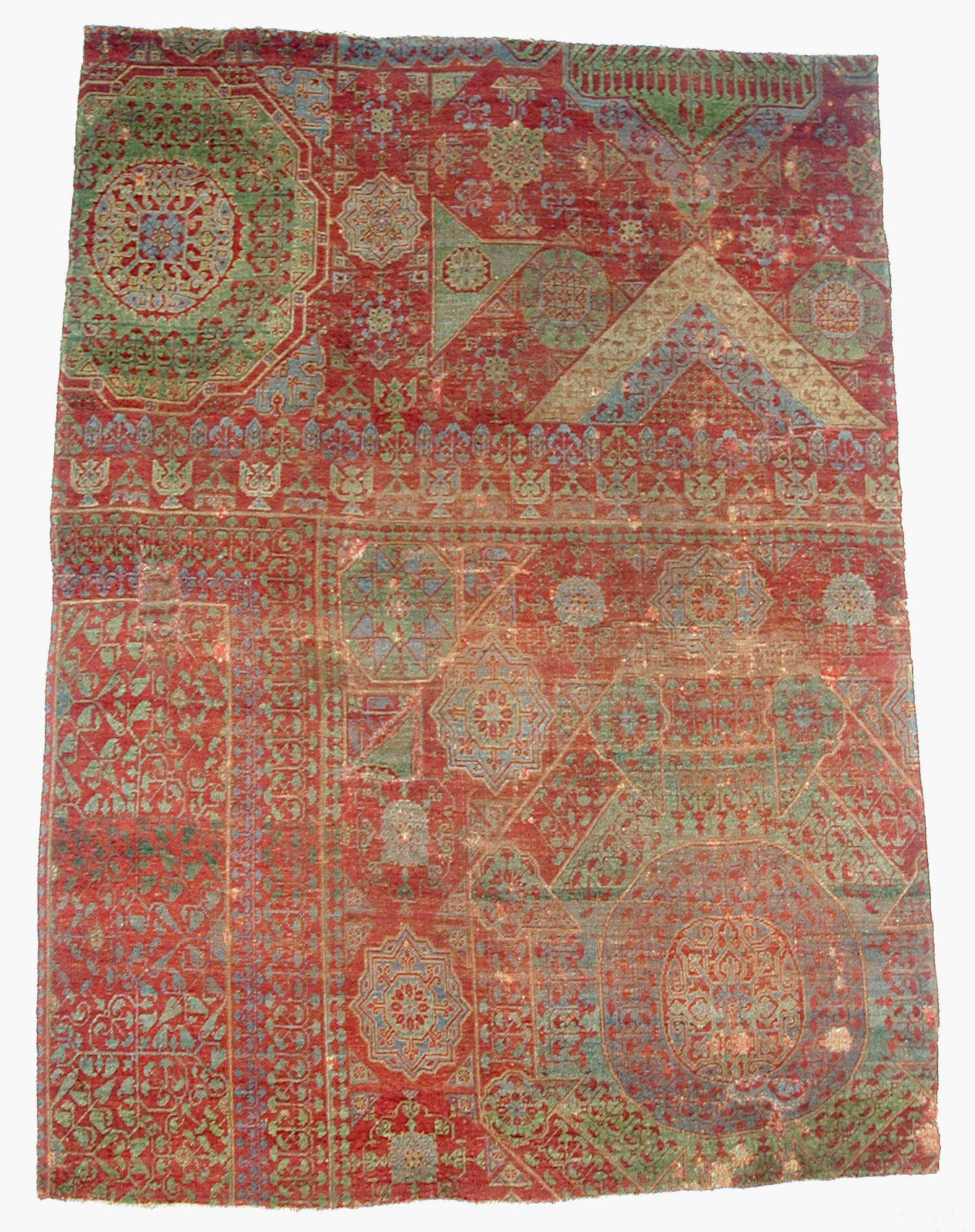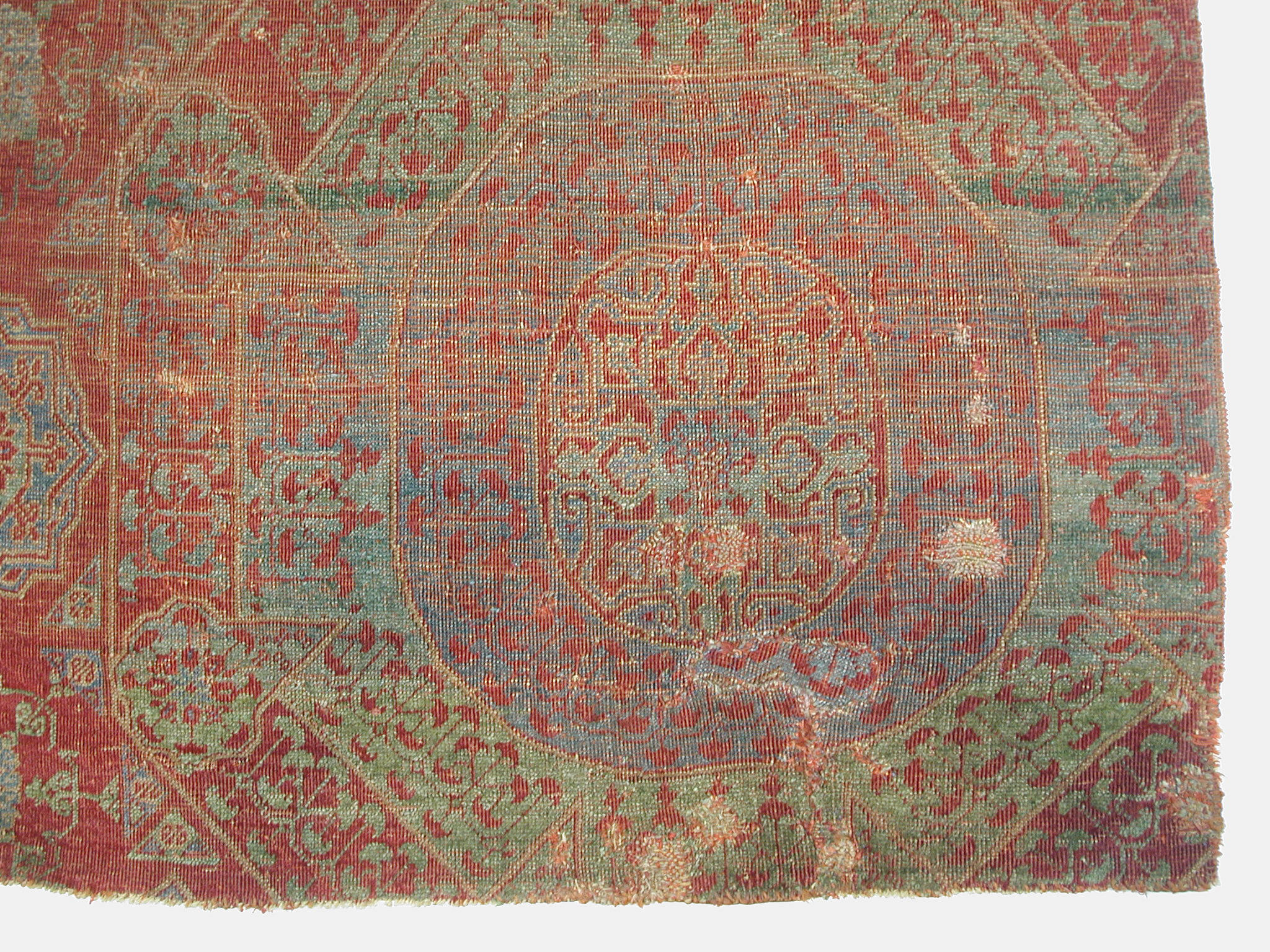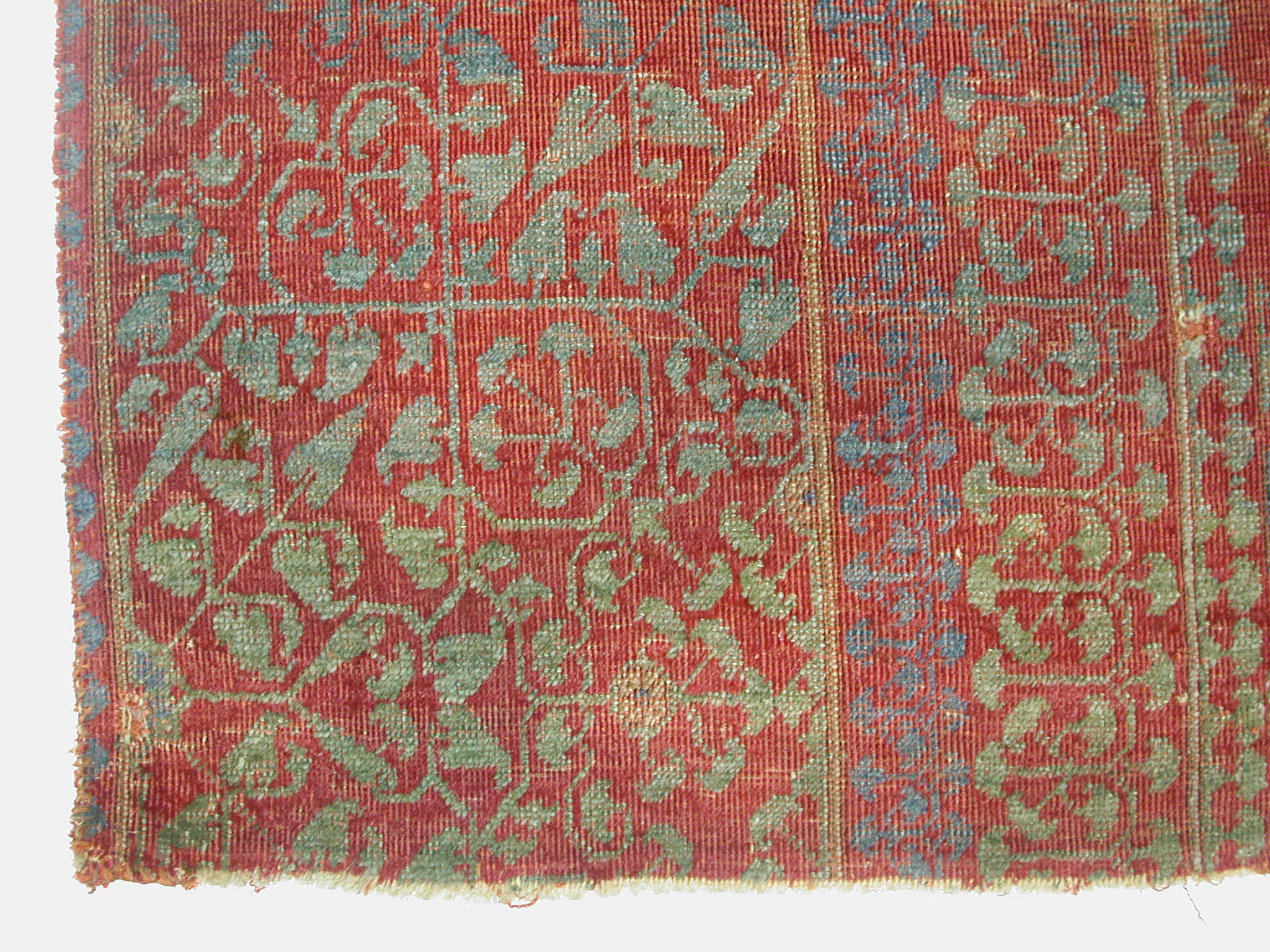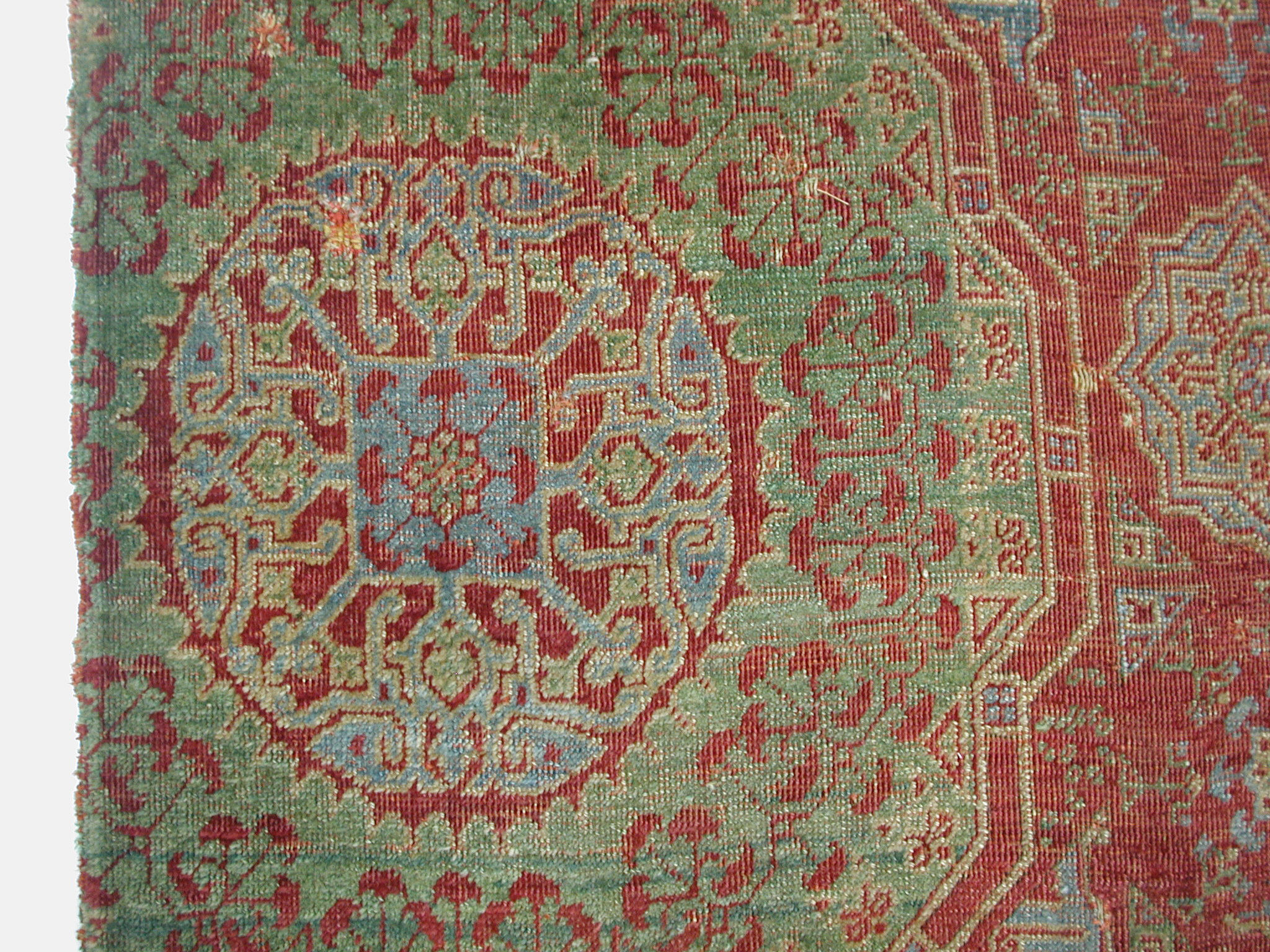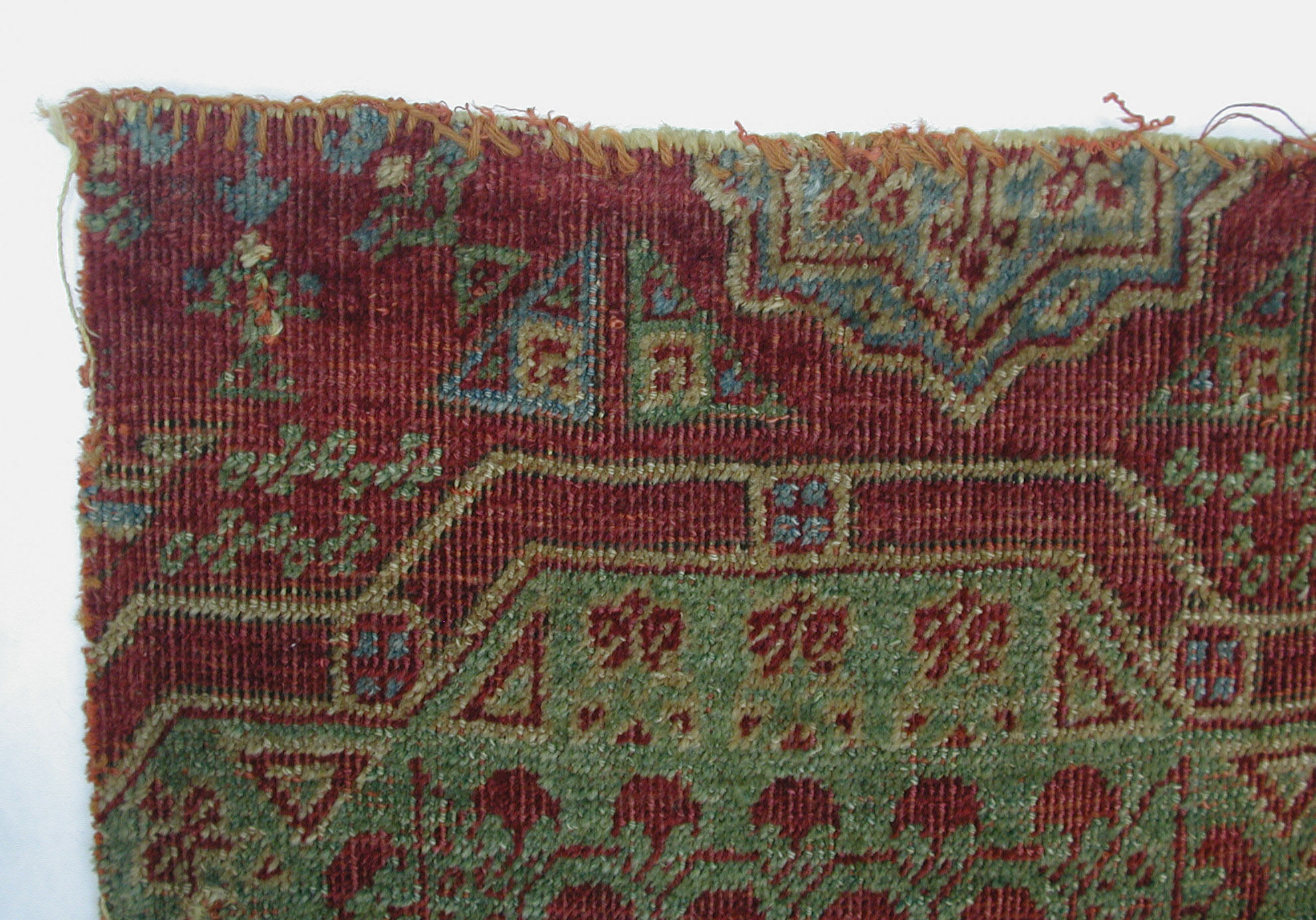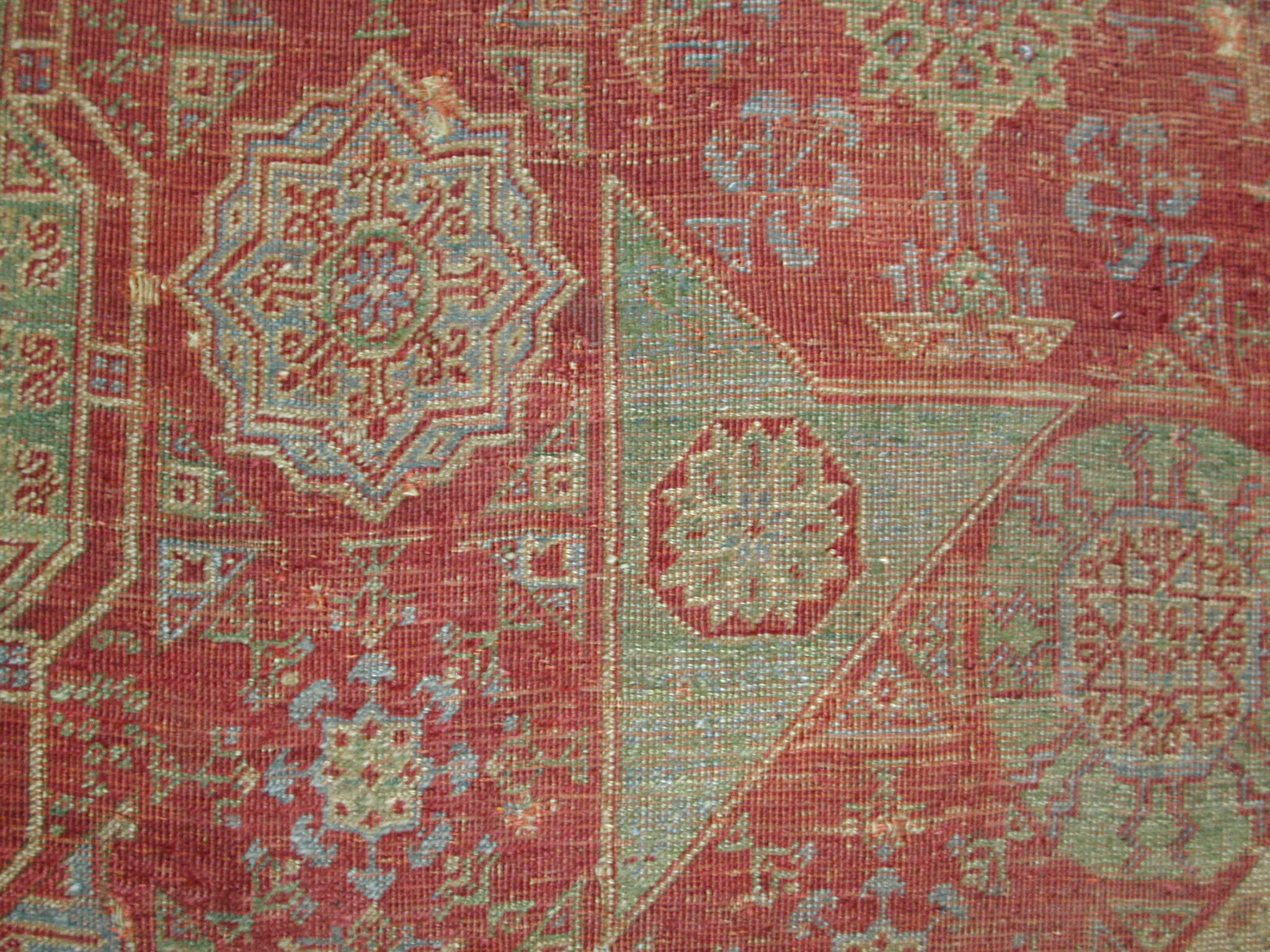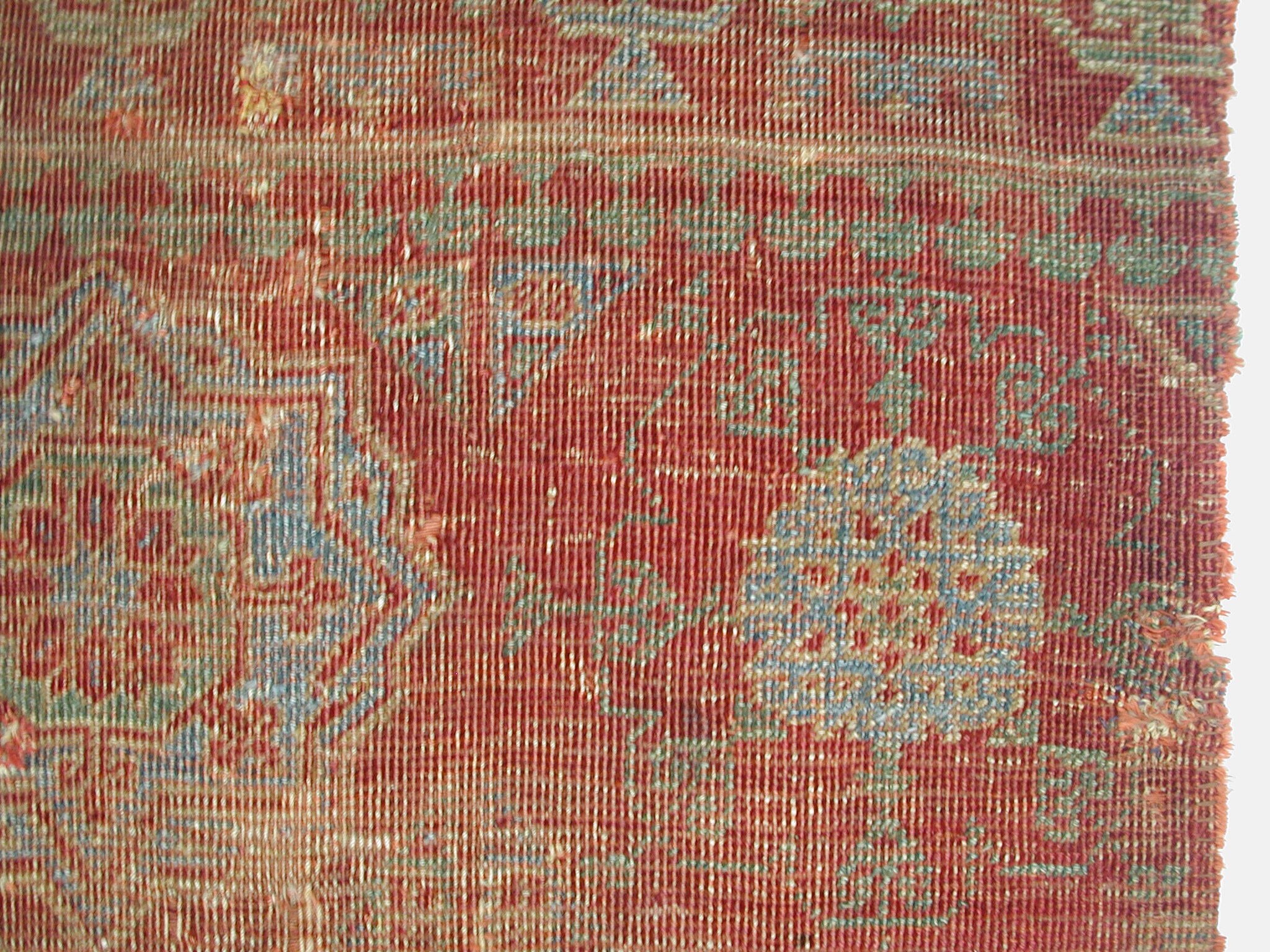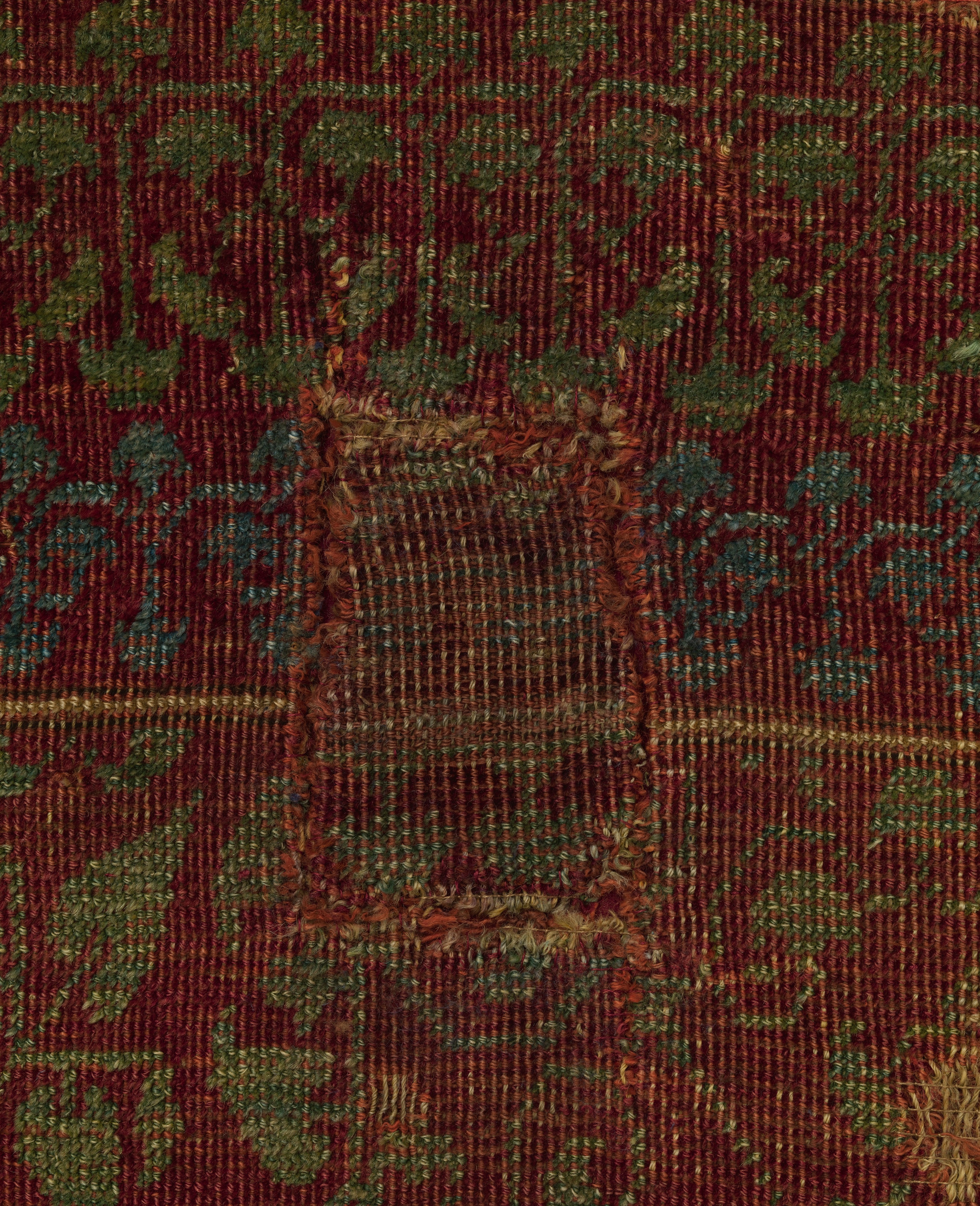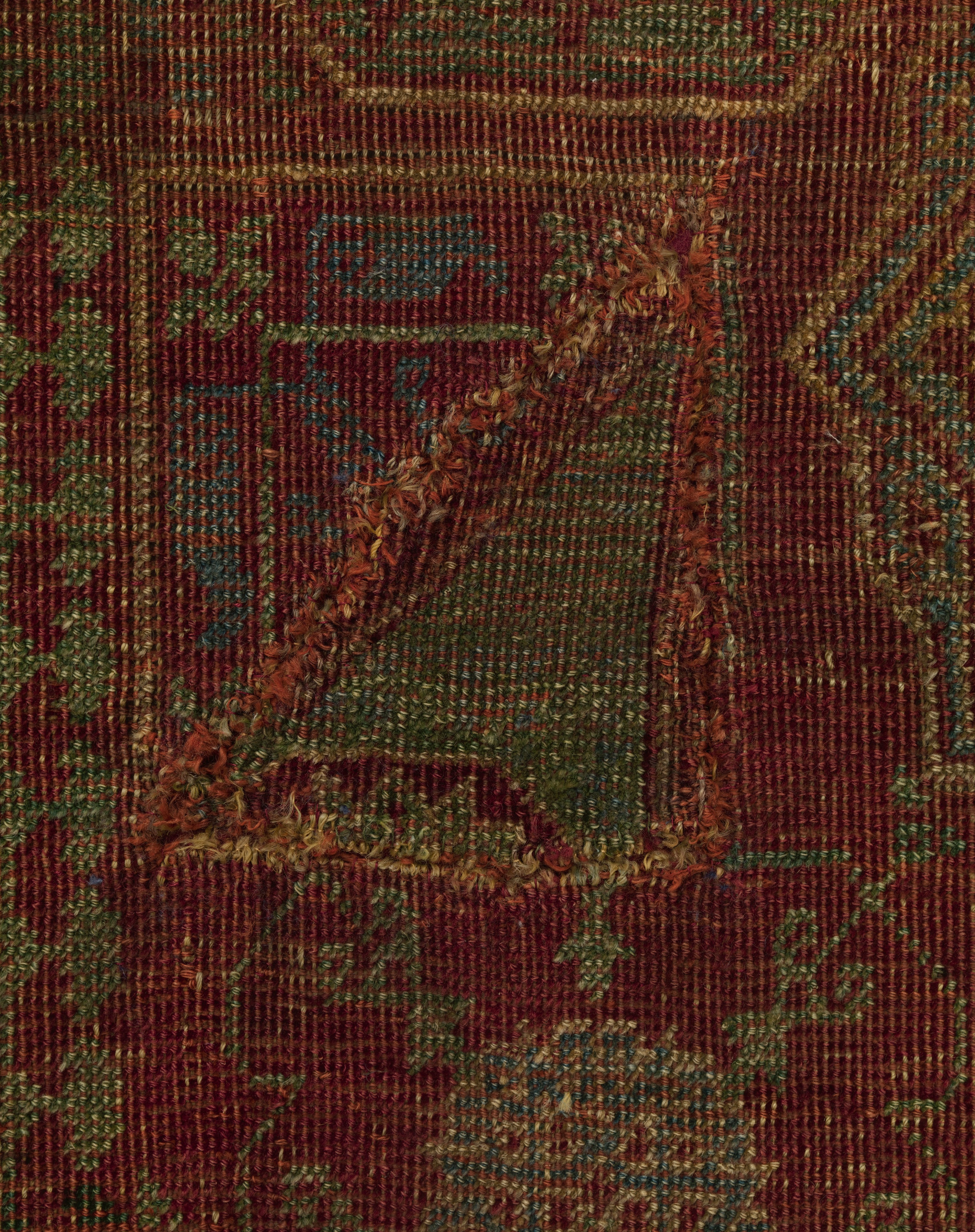Carpet Fragment
Not on view
Associated with the Mamluks in Egypt and Syria, Mamluk-style carpets figured significantly in Mediterranean commerce and appear in Venetian paintings from the sixteenth century. The style of these carpets is characterized by medallions surrounded by a variety of smaller geometric motifs, forming a kaleidoscopic appearance. The palette is limited to red, blue, green, and yellow tones. Documents first refer to Cairo as a center of carpet weaving in the last quarter of the fifteenth century, and production continued until the mid-sixteenth century, shortly after the 1517 Ottoman conquest of Egypt.
Due to rights restrictions, this image cannot be enlarged, viewed at full screen, or downloaded.
This artwork is meant to be viewed from right to left. Scroll left to view more.


